Keep the Character

“Not all houses like ours still have so many original details,” says Kurt Albrecht, pointing to the inlaid hardwood floors, ceiling medallions, Art Deco tile, and ornamental plasterwork that give personality to the current This Old House TV project, a 1933 Spanish Colonial Revival in the Silver Lake neighborhood of Los Angeles. Kurt and his wife, Mary Blee, are grafting a two-story addition onto the back of their 1,500-square-foot single-story home, including an enlarged kitchen, a family room, two additional bathrooms, and two bedrooms.
As much as they look forward to having some breathing room for their growing family, they’re also insistent that the new spaces blend in seamlessly with the older ones, some of which will remain essentially intact. “Our house is a classic Spanish Revival—and we want to keep it that way,” says Mary. To do so, the TOH crew is working closely with Los Angeles–based Home Front Design + Build to replicate the period details and finishing touches that make this house so special in the first place. Read on to learn how they’re doing it.
Fancy Wood Floors
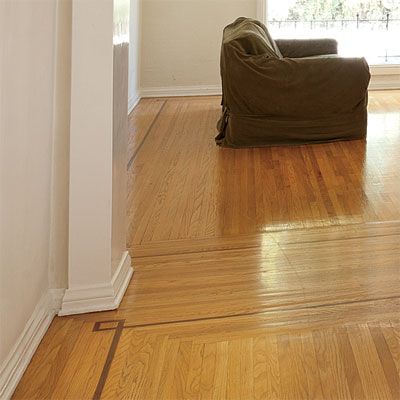
The floors in the house’s living and dining rooms feature a perimeter apron made of strips of oak in a log-cabin pattern, inlaid with narrower strips of walnut with a square-knot pattern in each corner. “Inlays and intricate patterns became popular after the Industrial Revolution, when wood flooring became cheaper to manufacture,” says TOH TV master carpenter Norm Abram. Here’s how the crew recreated this look in the new addition.
Vintage Detail: Square-Knot Inlays
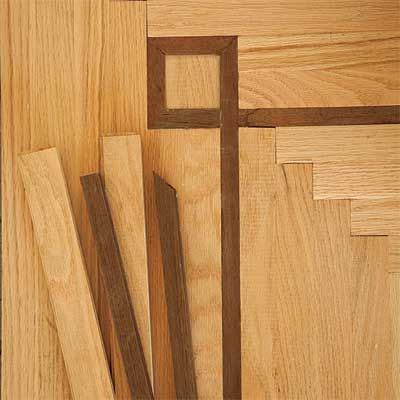
Flooring contractor Luke Hiller re-created the look for the floor of the new family room placing a ¾-inch walnut inlay within the 1½-inch oak strip flooring, all held together with tongue-and-groove joinery cut with a router. To make the knots, Hiller mitered one end of a long border strip, then mitered shorter lengths to form the square, and completed the pattern by filling the square with strip oak cut to size. Later, the new floors will be stained to match the existing ones.
A Star-Shaped Ceiling Medallion is Born
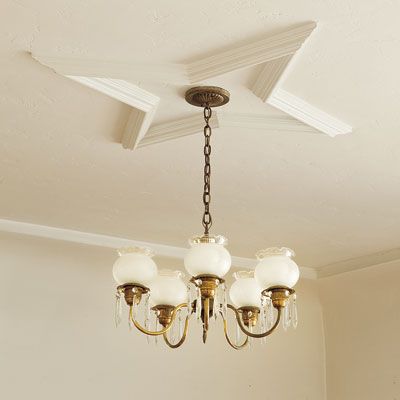
While the original four-point-star ceiling medallion in the dining room is made of oak, the TOH project team opted for softer, easier-to-mill poplar for the replicas they’re installing in the new master bedroom and family room. Here’s how the crew recreated this detail in the new addition.
Vintage Detail: Ceiling Medallion
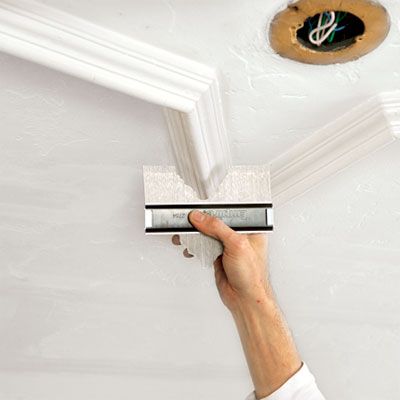
Custom cabinetmaker Larry Bucklan of Bucklan Design Woodworks used a molding gauge to copy the original medallion’s profile which was then used to make a knife fitted into a spindle shaper that cut the profile from a length of 2½ x 2½ poplar. Then four pairs of molding strips were mitered at opposing angles: one end at 21 degrees and the other at 69 degrees.
Vintage Detail: Ceiling Medallion
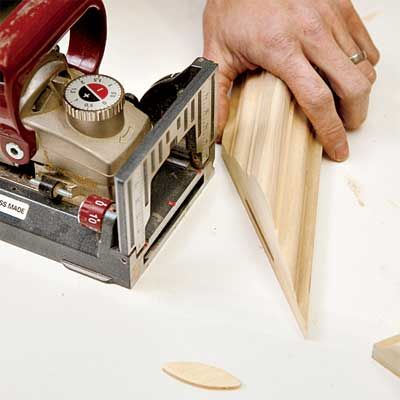
Like angles were joined with biscuits and wood glue and the pieces then placed in a jig during assembly.
Vintage Detail: Ceiling Medallion
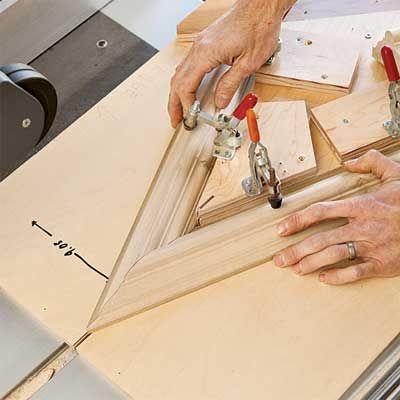
Once the ceiling medallion assembly was finished, the joints were held together with spring miter clamps.
Vintage Detail: Ceiling Medallion
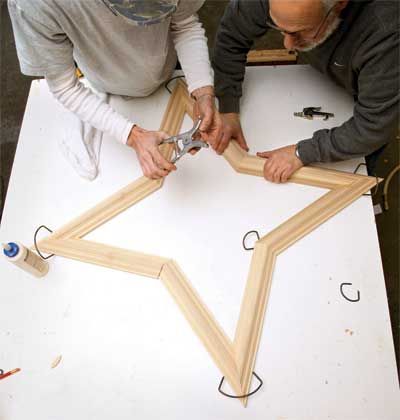
A radio-frequency glue dryer was used to help cure the adhesive at the joints of the four-point star. This medallion could be made with any symmetrical stock molding.
Vintage Detail: Ceiling Medallion
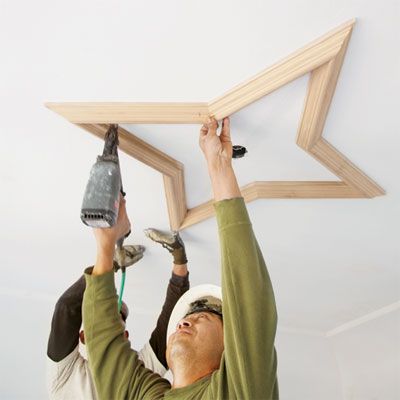
Finally, the medallion was installed using Liquid Nails adhesive and 2½-inch finishing nails driven through the ceiling joists.
Retro Tile with Style
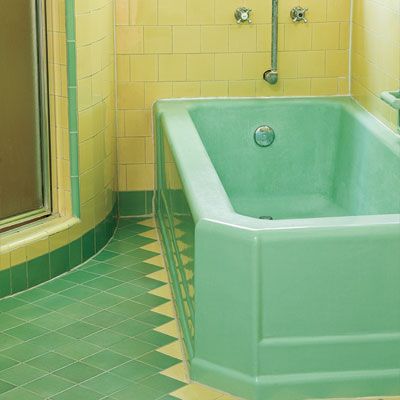
The original bathroom’s colorful Art Deco tile couldn’t be salvaged, but Kurt and Mary hoped to carry the style forward into the addition. For the downstairs powder room, they mixed handcrafted restoration ceramic tile in banana yellow from Mission Tile West with less-expensive black tile from Daltile. Keep reading to see how the crew recreated this vintage detail.
Vintage Detail: Art Deco Bath Tile
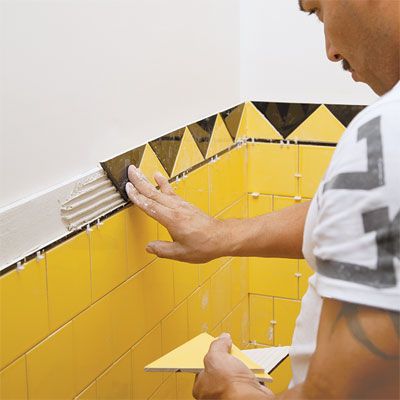
Here, contractor Juan Sandoval installs a border in the same sawtooth pattern that edged the old bathtub.
Vintage Detail: Art Deco Bath Tile
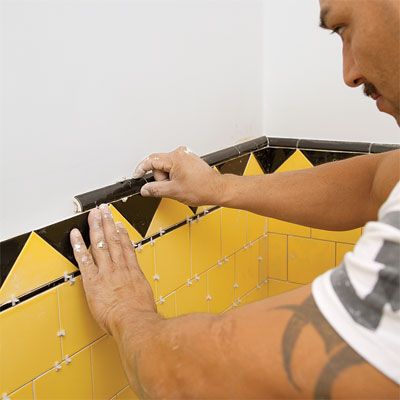
Contractor Juan Sandoval then tops the sawtooth tile pattern with black trim pieces. “This is the bathroom that visitors will use most often, so we wanted it to pack a period-appropriate punch,” says Mary.
Mastering the Plaster
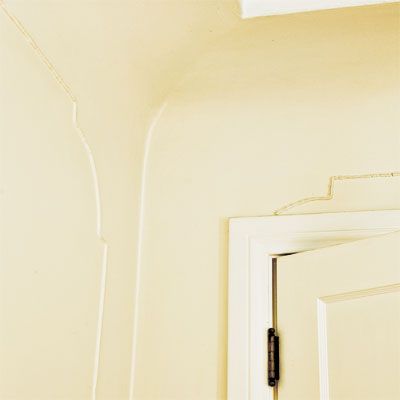
Kurt and Mary loved the fanciful “wedding cake” plaster detailing—named for its resemblance to piped-on icing—on the walls of their old bedroom. To re-create it, Home Front plaster expert Alfonso Garcia traced the original onto a piece of paper, cut out a cardboard template, and traced the shape onto the walls of the master bedroom. Keep reading to see how he finished the job.
Vintage Detail: Plaster Profiles
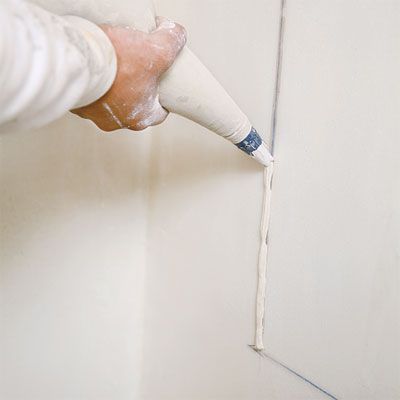
He used a canvas grout bag fitted with a star-shaped nozzle (the same geometry as the original nozzle) to apply plaster to the walls.
Vintage Detail: Plaster Profiles
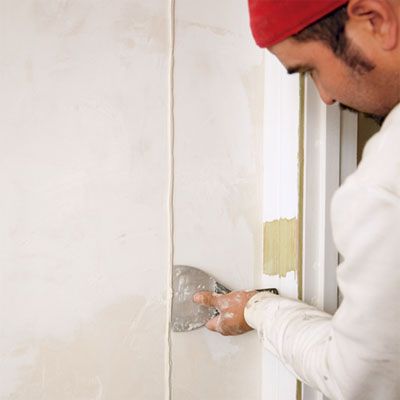
Home Front plaster expert Alfonso Garcia then removed excess plaster with a taping knife.
Vintage Detail: Plaster Profile
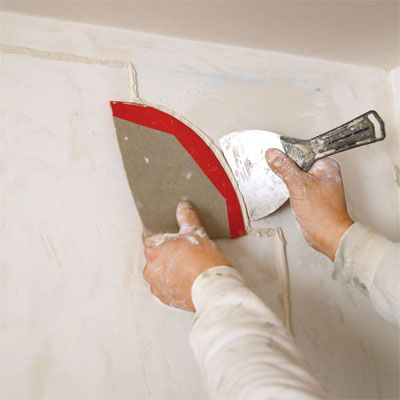
As he cleaned up plaster around the curve, he used the cardboard template to help maintain its shape.
Vintage Detail: Plaster Profiles
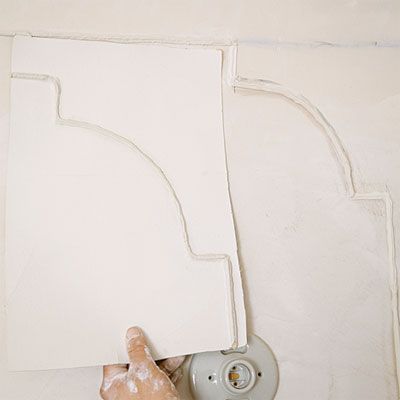
After the corner detail was complete, Home Front plaster expert Alfonso Garcia made sure it matched the original profile. When the plaster dried, he used a sanding block to lightly smooth the surface and edges to prep them for paint.
